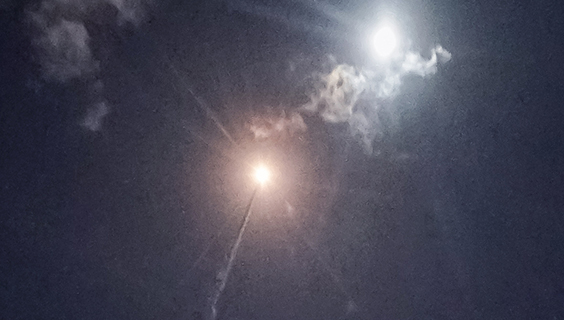Original article by Jim Lynch published in Michigan Engineering
Questions? Those are easy.
Even our earliest ancestors looked to the sky and stars above and formulated questions, trying to figure out what it all is and how it all works.
But answering those questions, often about phenomena taking place thousands to millions of miles away? That’s the trick.
Since the aftermath of World War II, it’s been the specialty of the University of Michigan’s Space Physics Research Laboratory (SPRL). Instruments dreamt up and developed here by researchers and students have already reached areas of the solar system that human beings won’t for years, decades or even longer.
Want to know how the makeup of Earth’s upper atmosphere impacts aircraft flight? Need an understanding of how hurricanes grow in destructive power and move as they near shore? Want to see how the sun controls things inside the heliosphere and grasp how it threatens Earth?
Designed to function in the harshest known environments, SPRL instruments are answering these questions and an array of others about our universe from the confines of its labs and offices within U-M’s Climate and Space Research Building in Ann Arbor.
2021 marks the 75th anniversary of the lab’s creation, making it older than NASA itself. And, in that span, it has helped produce some of the most important instruments in the history of space exploration, shedding light on questions that once seemed beyond our understanding. SPRL gadgets currently orbit, or have orbited, Earth, Mercury, Venus, Mars, Saturn and some of its moons, and the sun.
Behind its non-descript doors on the first floor of Climate and Space’s North Campus building, SPRL offers an increasingly rare kind of environment, one that benefits from the input of faculty researchers, the creative thinking of SPRL’s engineers as well as the students they serve.
“Being situated within the university is ideal,” said Sue Lepri, SPRL’s director and an associate professor of climate and space sciences and engineering. “It’s this great educational experience—everyone is learning. Students that are coming into SPRL are not just designing one little widget on a car or an airplane. They’re designing something that is one-of-a-kind and is going to go to space.”
And the results are undeniable.
Those who have passed through SPRL’s doors over the years have gone on to leadership positions in NASA and its Jet Propulsion Laboratory (JPL) and Goddard Space Flight Center, SpaceX and Blue Origin and positions at major research institutes. Thomas Zurbuchen, a former Michigan Engineering professor and associate dean who is now NASA’s associate administrator for science, is just one example.
“There are so many leaders among SPRL’s graduates. Frankly, it’s astonishing,” said Zurbuchen, who served as Lepri’s Ph.D advisor. That list includes: the thermal lead on the James Webb Space Telescope, the deputy software lead on NASA’s Psyche mission to explore a metal asteroid, the instrument integration lead on the Mars 2020 mission, the lead for SpaceX’s launch operations and the second-in-command in heliophysics at NASA Goddard Space Flight Center.
“The lab is in many ways audacious,” Zurbuchen added. “To really advance knowledge about the solar system and climate science, you need to do more than just analyze data. You need to actually build systems and develop instruments that explore the solar system and monitor our own planet. There are very few university-based labs in the country that can do this and SPRL is one of them.”
This 75th anniversary year marks a new chapter for the lab, with Lepri stepping into the director’s position— the first woman to hold the position.
While that chapter gets started in earnest, take a short look back at SPRL’s history and some of its work.

